POV: You have searched high and low through Google, trying to find a definitive guide to help you finally understand the intricate differences between the Korean topic particle 은/는 (eun/neun) and subject particle 이/가 (i/ga).

That search has brought you here. Welcome! In this blog post, I will teach you the distinctions between 은/는 (eun/neun) and 이/가 (i/ga), shedding light on their subtle nuances and contexts in which they are employed.
These particles play a crucial role in sentence structure and meaning in Korean, but their usage can be perplexing for learners. Imagine them as the mischievous twins of the Korean grammar world. They may be similar, but they have distinct personalities and roles.
At the end, we will put our knowledge to the test by studying several examples to determine the best particle to use in each situation.
Before we start, here is a list of phrases and sentences that you will encounter throughout this post:
| Hangeul | Romanized | Meaning |
|---|---|---|
| jega goyangireul joahaeyo. | I like cats. | |
| jeoneun goyangireul joahaeyo. | I like cats. | |
| jeineun goyangireul joahaeyo. | Jay likes cats. | |
| sumineun goyangireul joahaeyo. | Sumin likes cats. | |
| jeiga goyangireul joahaeyo. | Jay likes cats. | |
| sumini goyangireul joahaeyo. | Sumin likes cats. | |
| tteokbokkiga maewoyo. | Ttokppokki is spicy. | |
| ajummaga tteokbokkireul mani jusyeosseoyo. | The ajumma gave me a lot of ttokppokki. | |
| tteokbokkineun maewoyo. | Ttokppokki is spicy. | |
| seoul jihacheoreun pyeonrihaneyo. | The Seoul subway is convenient. | |
| tteokbokkineun masisseoyo. | Ttokppokki is tasty. | |
| eomuktangi tteugeopneyo. | The fish cake soup is hot. | |
| ireumi mwoyeyo? | What’s your name? | |
| je ireumeun jonieyo. | My name is John. | |
| jega salgeyo. | I will buy (dinner for you). | |
| jeoneun salgeyo. | I will buy (it). | |
| jega jeiyeyo. | I am Jay. | |
| jeoneun jeiyeyo. | I am Jay. | |
| nuga jeiyeyo? | Who is Jay? | |
| ireumi mwoyeyo? | What is your name? | |
| i jibeun changmuni isseoyo. | This house has windows. | |
| tomatoneun joahaeyo. | I like tomatoes. | |
| jumare mwohaesseoyo? | What did you do over the weekend? | |
| jeoneun swieosseoyo. | I rested. | |
| jega swieosseoyo. | I rested. | |
| nuga jumare swieosseoyo? | Who rested during the weekends? | |
| geunde jelriga joahaeyo. | But I like gummies | |
| geunde jelrineun joahaeyo. | But I like gummies | |
| goyangiga gwiyeowoyo. | The cat is cute. | |
| goyangineun gwiyeowoyo. | The cat is cute. | |
| naineun eotteoke doeseyo? | How old are you? | |
| naiga eotteoke doeseyo? | How old are you? | |
| jeoneun jumare deungsanhaesseoyo. | I went hiking during the weekends. | |
| sani nopasseoyo. | The mountain was tall. | |
| saneun nopasseoyo. | The mountain was tall. | |
| naneun jipcheongsoreul haesseo. | I cleaned the house. | |
| naega jipcheongsoreul haesseo. | I cleaned the house. | |
| jibi kkaekkeuthane. mwo haesseo? | The house is clean. What did you do? |
So why so much confusion with these two particles?

Many times, we tend to apply language rules found in our own mother tongue to the target language. It’s very common for English speakers to relate the Korean subject particle 이/가 (i/ga) to the subject of the sentence. Consider the following sentence:
I like cats.
We can break down the sentence into the subject, verb, and object (“I” being the subject, “like” being the verb, and “cats” being the object). Some English speakers will translate the sentence to Korean accordingly:
제가 고양이를 좋아해요. (jega goyangireul joahaeyo) - I like cats.
The translation is perfect! The subject particle was used correctly, and the sentence is complete. However, the confusion comes when the student is told that using the Korean topic particle 은/는 (eun/neun) will work as well:
저는 고양이를 좋아해요. (joneun goyangireul joahaeyo) - I like cats.
Both Korean sentences do look similar so they should mean the same thing, right? Not to a native Korean. There are subtle differences in each sentence which I will explain in a later section.
Then the student asks the teacher to clarify the difference between 은/는 (eun/neun) and 이/가 (i/ga) but the teacher responds with the oh-so-familiar,

“These two particles are almost the same. Don’t worry too much about it at the beginner level.”
Understandably, if you are a beginner learner, the last thing the teacher would want to do is bombard you with something that even some Koreans have problems explaining. But this also leaves many beginner learners lost and even more confused.
As we go through the sections, it is vital to approach the topic (pun intended) with an open mind, free from the influence of other languages. Based on personal experience, it will be much easier to understand it without all the cognitive distractions.
So what is the Korean topic particle 은/는 (eun/neun)?
Simply put, the Korean topic particle 은/는 (eun/neun) is used to mark the topic of the sentence.
At this point, let’s go easy and talk about when to use 은 or 는.
Since 은/는 (eun/neun) is used to mark the topic of the sentence, this particle should be placed after a noun.
If the last character of the noun has no 받침 (bachim) i.e. the noun ends with a vowel, you will use 는 (neun) after the noun:
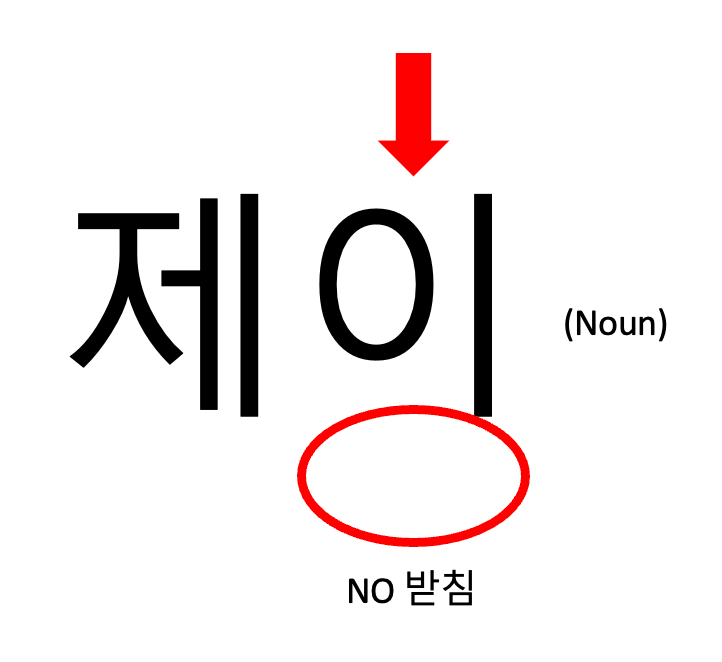
제이는 고양이를 좋아해요. (jeineun goyangireul joahaeyo) - Jay likes cats.
If the last character of the noun contains 받침 (bachim) i.e. the noun ends with a consonant, you will use 은 (eun) after the noun:
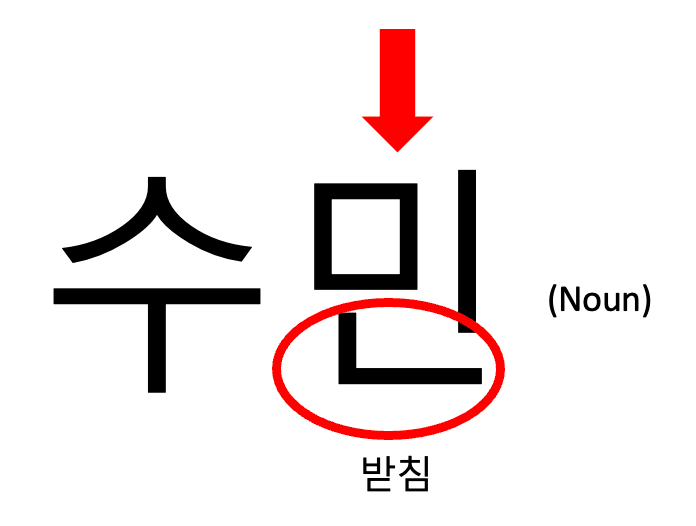
수민은 고양이를 좋아해요. (sumineun goyangireul joahaeyo) - Sumin likes cats.
In both the above sentences, 제이 (jei) and 수민 (sumin) are the topics of each sentence, indicating that both persons like cats.
Then what is the Korean subject particle 이/가 (i/ga)?
No points for getting this right but the Korean subject particle 이/가 (i/ga) is used to mark the subject of the sentence.
It, too, should be placed after a noun.
If the last character of the noun has no 받침 (bachim) i.e. the noun ends with a vowel, you will use 가 (ga) after the noun:
제이가 고양이를 좋아해요. (jeiga goyangireul joahaeyo) - Jay likes cats.
If the last character of the noun contains 받침 (bachim) i.e. the noun ends with a consonant, you will use 이 (i) after the noun:
수민이 고양이를 좋아해요. (sumini goyangireul joahaeyo) - Sumin likes cats.
At this point, it will seem as if both particles are more or less the same. So can they be used interchangeably? My short answer to you is: Yes, but you SHOULD NOT because they are DIFFERENT. So, let’s answer the big old question:
When should I use 은/는 (eun/neun) and when shoud I use 이/가 (i/ga)?
Context, context, context. That is how important context is in determining whether to use 은/는 (eun/neun) or 이/가 (i/ga) particle in a sentence. The context can even affect the meaning of a single sentence when used in different situations, even though the particle stays the same.

In the following sections, I will explain how using 은/는 (eun/neun) or 이/가 (i/ga) in certain contexts can affect how a native Korean interprets your sentence. Let’s get into it!
Specific vs. Generic statements
Using one particle over the other can indicate whether you're discussing something in general or specific. Let’s consider the following example and we will start learning more from there.
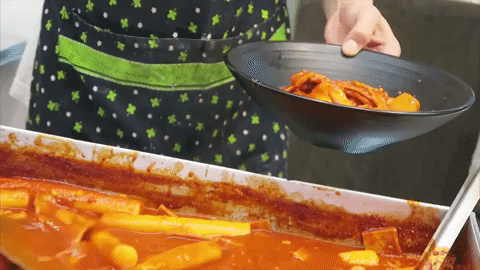
Let’s say you are going out with some friends to get some Korean street food. You decide to buy some 떡볶이 (ttokppokki) i.e. Korean rice cake for yourself. You take the first bite and the spice hits you like a flaming dragon dancing a fiery tango in your mouth.
Your first response is,
떡볶이가 매워요. (ttokppokkiga maewoyo) - Ttokppokki is spicy.
Upon hearing your statement, your Korean friends immediately understood that you were describing the taste of the ttokppokki you had just eaten. In fact, the statement probably sounds something like this to them:
떡볶이가 매워요. (ttokppokkiga maewoyo) - This tokppokki is spicy.
In this context, the usage of the subject particle 이/가 (i/ga) indicates that you are talking about something specific.
So, if want to talk about something specific, like if the 아줌마 (ajumma) gave you more-than-usual 떡볶이 (ttokppokki), you can say,
아줌마가 떡볶이를 많이 주셨어요. (ajummaga ttokppokkireul mani jusyossoyo) - The ajumma gave me a lot of ttokppokki.
Now, let’s consider the same scenario but instead, let’s use the topic particle 은/는 (eun/neun) in the sentence:
떡볶이는 매워요. (ttokppokkineun maewoyo) - Ttokppokki is spicy.
To us as English speakers, both sentences seem to mean the same thing because we simply see 3 main parts: Ttokppokki (subject), to be/is (verb), spicy (adjective)

To Koreans, the 은/는 (eun/neun) used in this context may cause them to interpret the sentence in a way that an English speaker wouldn’t expect:
떡볶이는 매워요. (ttokppokkineun maewoyo) - Ttokppokki is spicy in general.
Hearing a sentence like this, your Korean friends might think, “Maybe it was your first time trying 떡볶이 (ttokppokki) and now, you think that all 떡볶이 (ttokppokki) is spicy.”
Granted, common sense and situational awareness should tell people that you were talking about just that particular 떡볶이 (ttokppokki) but remember that your Korean friends are more sensitive to the nuance of using 은/는 (eun/neun) in generic sentences.
The learning point here is the usage of the topic particle 은/는 (eun/neun) can indicate that you are talking about something generic.
So, if you want to talk about something generic, like if you want to talk about how convenient the Seoul subway is, you can say:
서울 지하철은 편리하네요. (soul jihachoreun pyolrihaneyo) - The Seoul subway is convenient.
Following so far? This is just the beginning! Let’s move on to the next section.
Something new vs. something already mentioned
This will be a relatively simple section to understand.
Let’s carry on with our 떡볶이 (ttokppokki) story. Earlier, we had already talked about how spicy the 떡볶이 (ttokppokki) was, so talking more about 떡볶이 (ttokppokki) will no longer be considered “new”.

So, If you want to add certain information about the 떡볶이 (ttokppokki), you can say:
떡볶이는 맛있어요. (ttokppokkineun madissoyo) - Ttokppokki is tasty.
Learning point: The usage of the topic particle 은/는 (eun/neun) indicates that you are referring to something already mentioned.
"Hold up! Didn't you say that the usage of the topic particle 은/는 (eun/neun) indicates something generic?"
Yes, and I also mentioned that context is king! Context heavily dictates how a certain particle will be interpreted.
In this context, the subsequent mentions of 떡볶이 (ttokppokki) using the topic particle 은/는 (eun/neun) clearly refer to the first 'spicy ttokppokki' that was discussed.
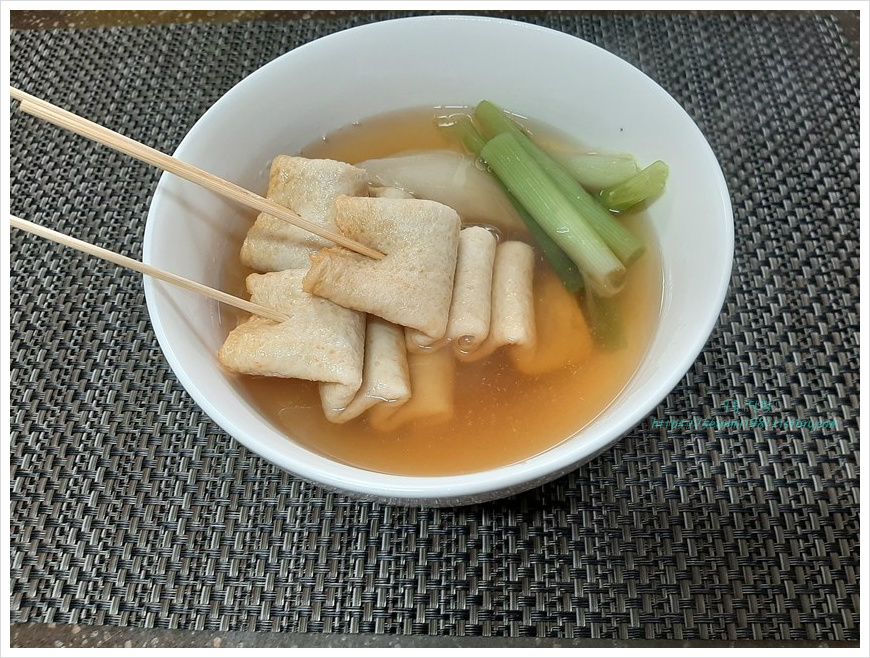
Continuing with the story, you also bought some 어묵탕 (omuktang) or fish cake soup just now and you want to comment on how hot the soup is. Since 어묵탕 (omuktang) has not been mentioned before, you will use the subject particle:
어묵탕이 뜨겁네요. (omuktangi tteugomneyo) - The fish cake soup is hot.
So, you can use the subject particle 이/가 (i/ga) to indicate that you are talking about something new.
To give a further example, I am pretty sure beginner Korean learners are familiar with the following dialogue:
Jay: 이름이 뭐예요? (ireumi mwoeyo) - What’s your name?
John: 제 이름은 존이에요. (je ireumeun jonieyo) - My name is John.
Notice that at the beginning, 이/가 (i/ga) was used together with 이름 (ireum) or name. After that, John used 은/는 (eun/neun) simply because he was still talking about his name, which was something that was already mentioned.
Focus on subject vs. focus on description/verb
Another easy learning point on the difference between the Korean subject particle and the topic! Let’s dive straight into it.

Imagine yourself on a date and the whole thing is going great. The weather’s nice and you want to end the date leaving a good impression; you want to pay for dinner. How would you try to express your desire to pay for dinner in English?
You will probably say something like:
“Let me pay for tonight’s dinner.”
Reading the sentence back to yourself, would you agree that the focus of the sentence is “me.” Ideally, you want to emphasize the fact that YOU want to pay for dinner to impress your date
You can actually do that using the Korean subject particle 이/가 (i/ga). Let me demonstrate how to use it in a sentence:
제가 살게요. (jega salkkeyo) - I will buy (dinner for you).
In this context, the usage of the subject particle 이/가 (i/ga) puts the focus on the subject of the sentence. Obviously, the subject of the sentence is clearly marked with the subject particle. In fact, the sentence will probably sound like this to Koreans:
제가 살게요. (jega salkkeyo) - Let ME buy (dinner).
Now, let’s learn when to use the topic particle 은/는 (eun/neun) in a similar sentence to the one above.
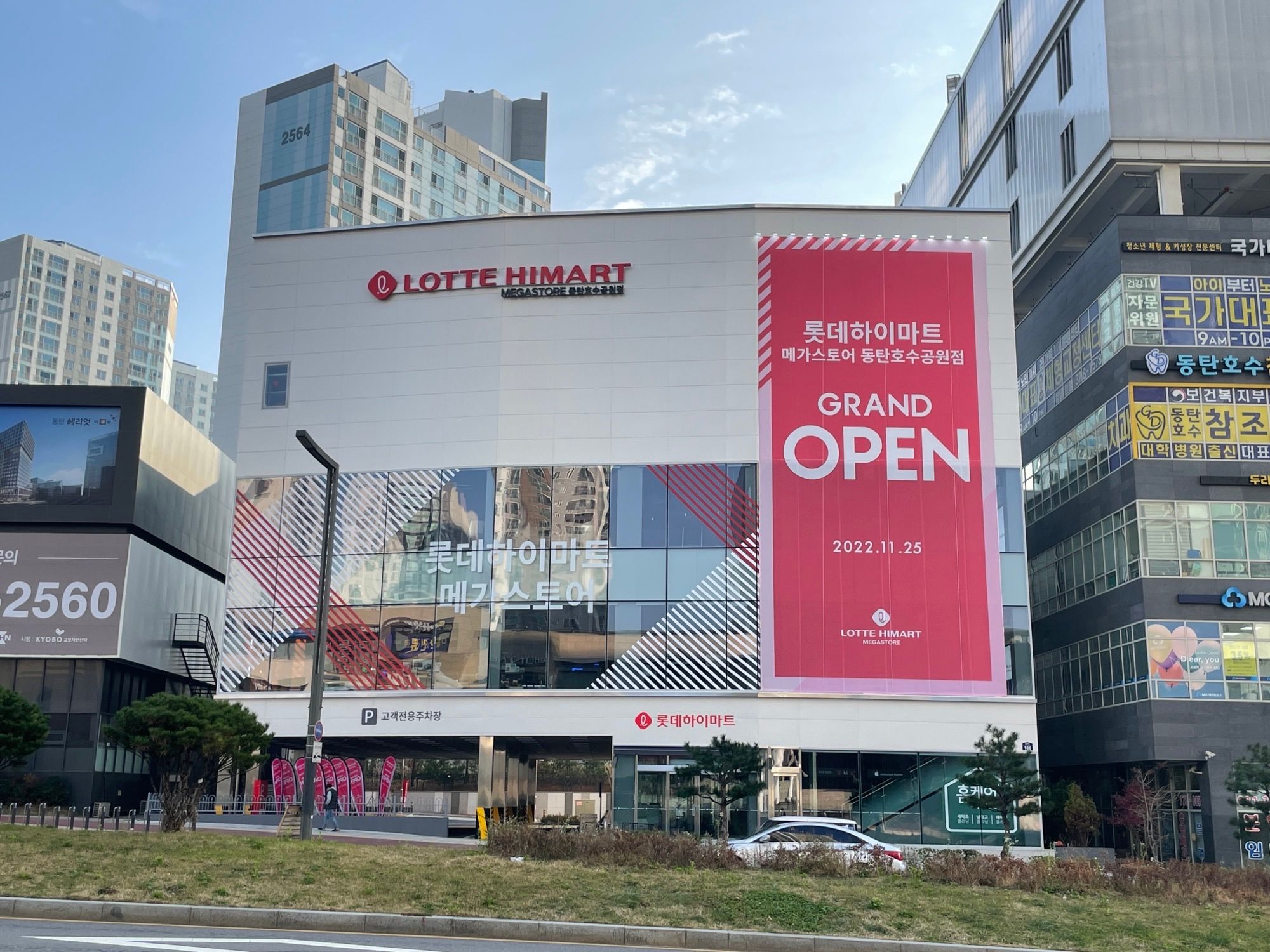
Suppose you are out in the market shopping for a new television at Hi Mart (A Korean Best Buy) with your partner. A salesperson comes to both of you and recommends several models of TVs. They find a model that you seem to like a lot and ask if you would like to purchase it. You can say:
저는 살게요. (joneun salkkeyo) - I will buy (it).
In this context, the usage of the topic particle 은/는 (eun/neun) puts the focus on the description or verb of the sentence. Basically, the “subject” of the sentence (in this case, “I”) will have to take a back seat.
What if you were to use the subject particle 이/가 (i/ga) instead in the above scenario? Do you think there would be a huge misunderstanding between the salesperson and yourself?
제가 살게요. (jega salkkeyo) - let ME buy (the television).
The salesperson will understand you fine, BUT the salesperson will probably think to themself for a moment, “Does this person’s partner want to be the one to pay for the television…?”
Let’s look at another example for good measure. Consider the following two sentences:
- 제가 제이예요. (jega jeieyo) - I am Jay.
- 저는 제이예요. (joneun jeieyo) - I am Jay.
With the knowledge that we have just learned regarding focus on subject vs. focus on description, can you guess the possible preceding question for each sentence?
For sentence number 1, since the sentence uses the subject particle 이/가 (i/ga), the focus will be on the subject i.e. 제가 제이예요. (jega jeieyo).

It would also feel like the speaker is trying to direct attention to the fact that HE is the one who is called Jay in a room filled with other people. One possible preceding question for sentence 1 can be:
A: 누가 제이예요? (nuga jeieyo) - Who is Jay?
B: 제가 제이예요. (jega jeieyo) - I am Jay.
For sentence number 2, since the sentence uses the subject particle 은/는 (eun/neun), the focus will be on the description i.e. 저는 제이예요. (joneun jeieyo). It feels like the speaker is trying to answer a question related to their name
One possible preceding question for sentence 1 can be:
A: 이름이 뭐예요? (ireumi mwoeyo) - What is your name?
B: 저는 제이예요. (joneun jeieyo) - My name is Jay.
I’m sure you would have understood the learning points pretty well at this point. Later on, I will give you a chance to test yourself with a series of examples, just like the one above, to see if you have fully understood the concepts.
Showing contrast/comparisons
One special feature of the Korean topic particle 은/는 (eun/neun) is its ability to insinuate contrast even without the speaker elaborating too much on it.
This interesting feature can only be found in the topic particle 은/는 and not the subject particle so take note of that as well.

Once again, let’s create a scenario for ourselves to help us to understand better. Imagine you are going around with a realtor to look for an apartment to rent. You enter into a nice-looking unit and the realtor says this to you:
이 집은 창문이 있어요. (i jibeun changmuni issoyo) - This house has windows.
“Well obviously. The window is RIGHT THERE. I can see that with my own eyes,” you might think to yourself. Well, the realtor knows that as well but by using 은/는 (eun/neun), they were trying to tell you that this house is DIFFERENT.
In this case, the contrast can be found within the context in which the sentence was made. In the above example, the realtor is trying to tell you that the house you are in CONTRASTS with the houses that they planned to bring you to.
“Of all the houses that you will see today, this house has windows.” This contrast was what the realtor was trying to convey to you by using 은/는 (eun/neun).
Let’s learn with another example:
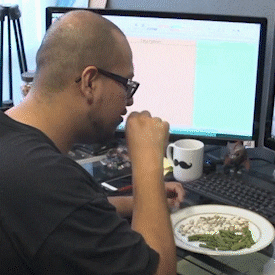
I’m sure we all have at least one friend who doesn’t like vegetables. Now, imagine you are having a conversation with that friend and you happen to be on the topic of vegetables. Your friend then proceeds to say this:
토마토는 좋아해요. (tomatoneun joahaeyo) - (translation withheld)
“Wait… Tomatoes like what? Where is the ‘object’ of the sentence?” In Korean, the object isn’t always marked with 을/를 (eul/reul) In the sentence above, 토마토 (tomato) is the object. The subject of the sentence (which is the speaker themself) was withheld by the speaker.
토마토는 좋아해요. (tomatoneun joahaeyo) - Compared to other vegetables, (I) like tomatoes
In order to detect the contrast implied by the usage of 은/는 (eun/neun), it really depends a lot on the context the sentence was used in. I would say that this point about 은/는 (eun/neun) is probably the most difficult one for beginners to understand.
Some Practical Practice
Now that we have learned all about the Korean topic and subject particle, let’s put our knowledge to the test! I will provide you with different scenarios and you will decide which particle to use as the most appropriate one.

Example 1: You are at work on a Monday. Your colleague walks over to your desk and asks what you did over the weekend.
주말에 뭐했어요? (jumare mwohaessoyo) - What did you do over the weekend?
How will you respond?
- 저는 쉬었어요. (joneun swiossoyo) - I rested.
- 제가 쉬었어요. (jega swiossoyo) - I rested.
You should respond back with A. Since your colleague asks about WHAT you did over the weekend, using the Korean topic particle 은/는 (eun/neun) in the sentence will put focus on the description or verb, which is 쉬었어요.
What do you think the preceding question to response B would be?
If your colleague was asking in a group setting,
누가 주말에 쉬었어요? (nuga jumare swiossoyo) - Who rested during the weekends?
Then B will be an appropriate response to give.
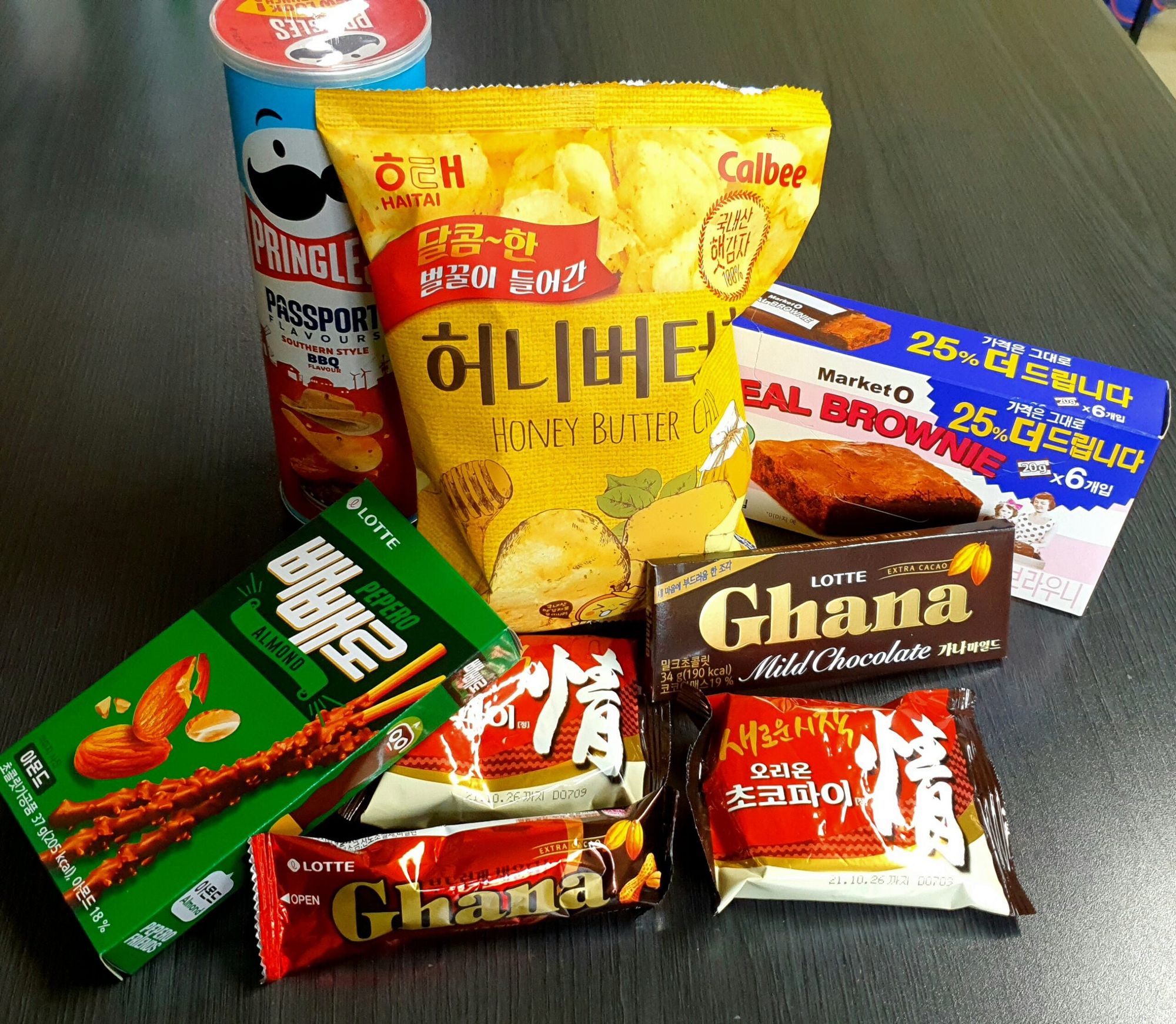
Example 2: You are having a conversation with your friend and both of you are discussing your favorite Korean snacks. Your friend finds out that you are not really into snacks but like gummies. Which of the following responses can be used by you?
- 근데 젤리가 좋아해요. (geunde jelrineun joahaeyo)
- 근데 젤리는 좋아해요. (geunde jelrineun joahaeyo)
근데 (geunde) - but
젤리 (jelri) - gummy
좋아하다 (joahada) - to like
Since you only like gummies amongst other Korean snacks, you can use the Korean topic particle 은/는 (eun/neun) to show contrast. So responding with B will make you sound something like this:
근데 젤리는 좋아해요. (geunde jelrineun joahaeyo) - Compared to other Korean snacks, (I) like gummies.
If you were to respond with A, the sentence would sound very strange to a Korean.
First of all, the subject particle clearly marks “gummies” as the subject of the sentence. So response A is actually missing an “object” in the sentence. To a Korean, response A would sound something like:
근데 젤리가 좋아해요. (geunde jelrineun joahaeyo) - Gummies like (the missing object).
Using the Korean topic particle 은/는 (eun/neun) to show contrast is one of the times when the topic particle and subject particle should not be used interchangeably. Take note of that!

Example 3: You are walking along the street and you see a cute cat at the side. What can you say to describe the appearance of the cat?
- 고양이가 귀여워요. (goyangiga gwiyowoyo) - The cat is cute.
- 고양이는 귀여워요. (goyangineun gwiyowoyo) The cat is cute.
Since you were trying to describe the appearance of a specific cat, you should be using the subject particle 이/가 (i/ga) when making a specific statement. Saying sentence A is the best in this scenario. Essentially, this is how you will sound like:
고양이가 귀여워요. (goyangiga gwiyowoyo) - That cat is cute.
On the other hand, if you were to choose B as your answer, it would sound like a generic statement about cats:
고양이는 귀여워요. (goyangineun gwiyowoyo) Cats, in general, are cute.
However, it will be OK to use 은/는 (eun/neun) and 이/가 (i/ga) interchangeably since it was obviously clear that you were talking about a specific cat.

Example 4: It’s a new semester in school, which means you will meet a lot of new classmates. You end up talking to someone new and want to ask about the person’s age. How would you ask that question?
- 나이는 어떻게 되세요? (naineun ottoke dweseyo) - How old are you?
- 나이가 어떻게 되세요? (naiga ottoke dweseyo) - How old are you?
Since you were trying to ask about a new friend’s age and it was considered as new information, you should use the subject particle 이/가 (i/ga) in your question. You should be asking by using option B.

Example 5: You are having a conversation with your friend and you are talking about your recent experience of hiking a mountain during the weekends,
저는 주말에 등산했어요. (joneun jumare deungsanhaessoyo) - I went hiking during the weekends.
To add on, you wanted to tell your friend that the mountain you hiked was pretty high. What can you say to your friend?
- 산이 높았어요. (sani nopassoyo) - The mountain was tall.
- 산은 높았어요. (saneun nopassoyo) - The mountain was tall.
A good number of you would probably choose A as your answer. Firstly, choosing A is not wrong! You probably thought since the sentence should be referring to a specific mountain, using 이/가 (i/ga) would be more appropriate.
Then some of you would choose B as your answer since the topic of the conversation (mountain climbing) was already mentioned. You probably thought since you were mentioning the “mountain” again, using the 은/는 (eun/neun) would be better.
In this case, both options are actually possible answers. However, if you were to ask me to pick a "better" option, I would pick B as an answer.
This is another great example to show the interchangeability of both particles, where both particles can be differently interpreted by both the speaker and listener, and yet yield the same understanding.
Let’s look at one last example!

Example 6: Let’s say you are happily married with kids. Your spouse comes home and notices a squeaky clean house. In fact, that day was your spouse’s birthday so you wanted to clean the house as a surprise
Very naturally, you would want to brag and tell your spouse that you were the one who cleaned the house, and not your kids. What would you say to your spouse?
- 나는 집청소를 했어. (naneun jipchongso haesso) - I cleaned the house.
- 내가 집청소를 했어. (naega jipchongsoreul haesso) - I cleaned the house.
This should be pretty straightforward! Since you want the focus to be on you, the subject, you should use the subject particle 이/가 (i/ga) in your sentence. Choosing B in this scenario will be your best bet and should sound something like this:
내가 집청소를 했어. (naega jipchongsoreul haesso) - I was the one who cleaned the house.
What do you think the preceding question to option A would be?
If your spouse came home and asked WHAT you did since the house looked clean, you can use option A as your response to put the focus on the verb:
Spouse: 집이 깨끗하네. 뭐 했어? (jibi kkaekkeutane mwo haesso) - The house is clean. What did you do?
You: 나는 집청소를 했어. (joneun jipchongsoreul haesso) - I cleaned the house.
How many questions did you get correct? Be mindful of such possible scenarios that may occur in real life and use them as opportunities to learn the nuances of each particle. You can also take note of how native Koreans would use them in everyday life.
In conclusion
Phew! Great job coming this far. Understanding when to use 은/는 (eun/neun) and 이/가 (i/ga) in Korean comes down to context, context, context. These little Korean particles may seem tricky at first, but they are your helpful guides to convey specific meanings.
These particles are so versatile that they can be used to emphasize subjects, hint at contrasts, or keep the focus on descriptions, etc. Master them well and you will have an arsenal of particles in your inventory to use for more effective communication
So, as you venture into the world of Korean, keep these particles in your linguistic toolkit, and your Korean journey will become more flavorful with every sentence you speak (just like that tasty spicy ttokppokki).
Happy learning!



